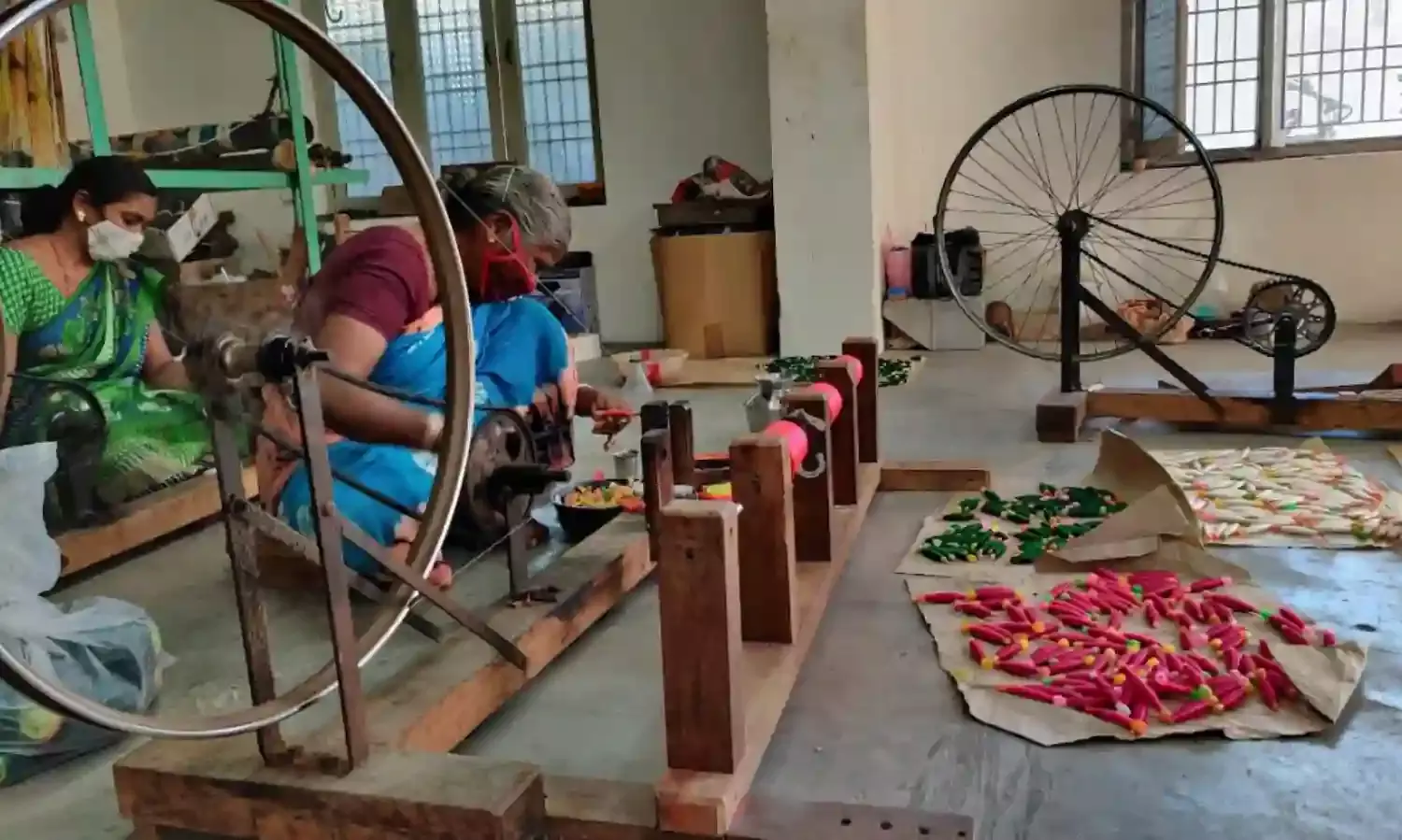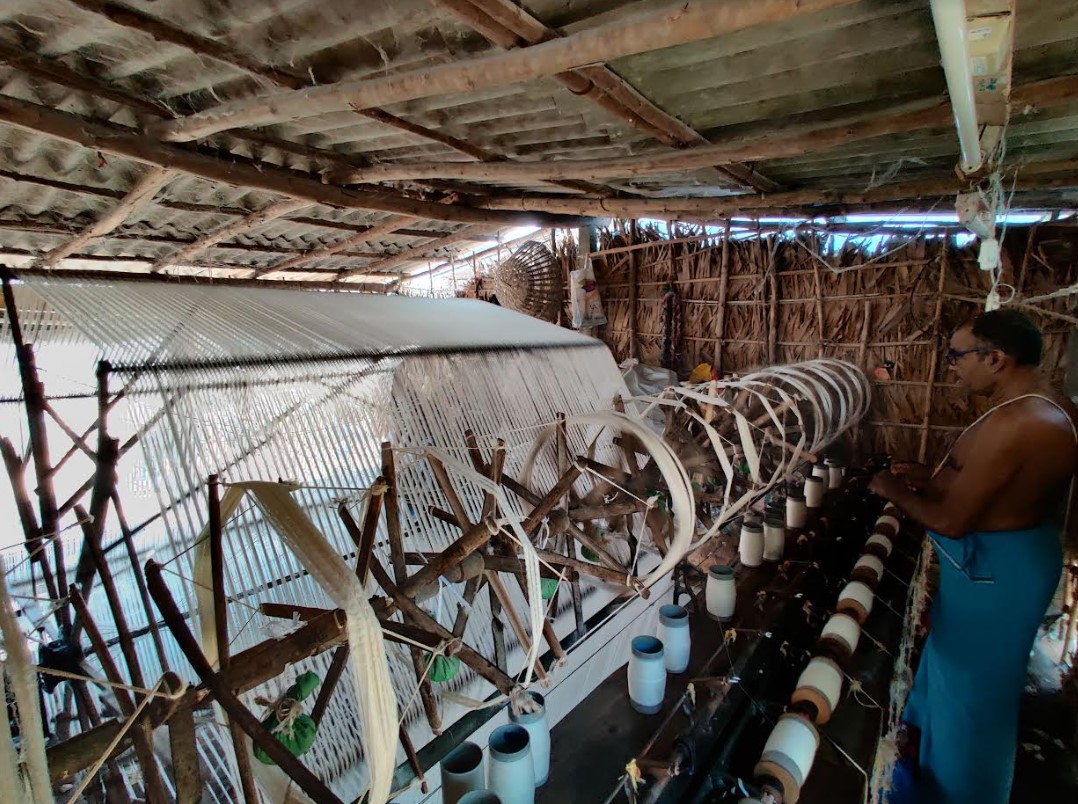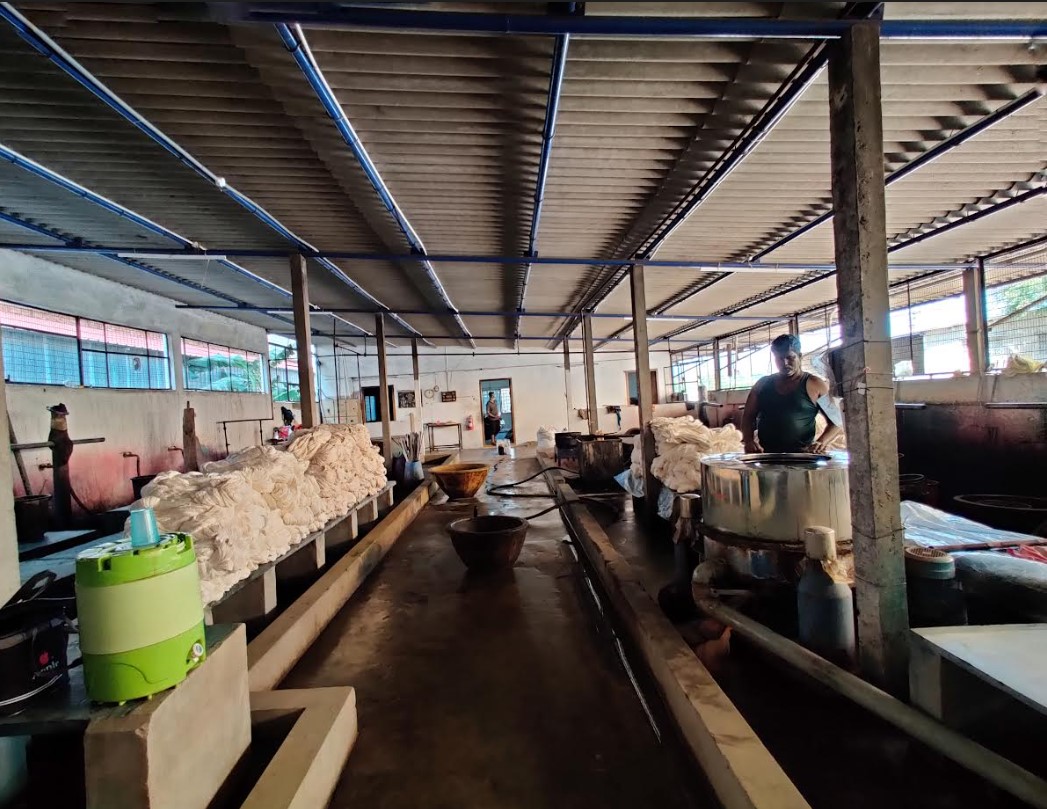Warp and Weft of Uncertainty
Weavers of Chirala’s handloom belt face a fading future at the looms;

“There’s no future in handlooms. We will be the last generation toiling away at the loom, for fourteen hours a day, straining our eyes, knees practically breaking, Mark my words,” said Jaya Sankar, 52, one of the second-generation weavers in Jandrapet, in Chirala, Andhra Pradesh.

He owns a loom that is hardly used anymore. It collects dust even when it sits in the center of his 200 sq ft home. Due to his old age, joint aches, loss of eyesight from operating the loom, he has switched to doing the preparatory work or anubhandha vrutti, that loosely translates to supplementary jobs. While the phrase suggests that this work just ‘supplements’, it is quite the opposite. Before the thread can be fed into the loom, it goes through five stages of preparation.
First, the raw material of cotton yarn is spun on a wheel to make threads. These threads are then sent to be dyed in natural or synthetic colours. After being dyed and dried, they’re warped and starched. The threads are stretched, laid out straight, then brushed in order to stiffen them. Then, the thread is sent to be unknotted, quality checked and separated into smaller clusters to make it easier for the handloom to pick up. Each step in this process is done by a different set of artisans, and it takes a considerable amount of time and effort.

If these ‘supplement’ jobs are not done properly, the weavers will not have anything to work with. These jobs are the foundation of the weaving process. However, the tragedy is that these are the workers who are the most overlooked, despite being an integral part of the process. Andhra Pradesh’s Chief Minister Y.S Jaganmohan Reddy, in his electoral campaign had promised the weavers financial aid in the 2019. Once elected, he announced the ‘YSR Nethanna Nestham Scheme’. Under the scheme, Rs 24,000 would be credited directly into the bank accounts of the weavers every year. The catch, however, is that this scheme is only applicable to those who own looms. It doesn’t aid those who are involved in preparatory work.
Avvaru Musalaiah, AP State Commission for Backward Classes member from Chirala, who has been working for the betterment of the weavers, said around 20% workers don’t own looms. “When Y.S Jaganmohan Reddy garu was preparing for the Nethanna Nestham Scheme, he was informed that there are 80,000 weavers in the state that needed financial aid,” said Musalaiah. According to him, the data provided to the CM was incorrect, it only represented those who owned looms, and so the scheme aided only those weavers. This issue was later brought to the CM’s notice, but the eligibility criteria did not change.
According to the YSR Scheme’s website, the ‘Nethanna Nestham Scheme’ currently covers 69,225 independent handloom weavers who are from backward classes and are below the poverty line. In July 2020, in the midst of the pandemic, the government issued an order to dissolve the All India Handloom Board (AIHB). The AIHB had functioned under the Ministry of Textiles since 1952. This upset many weavers and artisans because it was an official forum to take their complaints to. The absence of this platform has left the weavers in worse conditions than they were with the onset of COVID-19.
Macherla Mohan Rao, president of National Federation for Handlooms and Handicrafts (NFHH), who organised a protest in Chirala in August 2020 after the abolishment of the AIHB said, “ abolition of the board suggests that the government is withdrawing its responsibility to the sector, that’s struggling to retain its presence.”
Sai Lakshmi, 21, a resident of the syndicate weavers colony in Chirala, whose family spins the yarn into threads said, “three members of my family take turns to spin the wheel. It’s spun manually.” This is the primary source of income for them, and for each day’s work, they collectively make between Rs. 450-500. They are one of the many weaver families in Chirala who are barely able to make ends meet.
Apart from financial woes, the weavers also suffer from breathing ailments such as tuberculosis, asthma and recently, have had a higher risk of contracting COVID-19 due to thread dust and chemical fumes. According to Jaya Sankar, the handloom industry needs an upskilling programme in order to thrive and attract a younger workforce. “We have sent our children to bigger cities to find work that will not strain them physically. There is no future behind the loom. We want better lives for them,” he said. The handloom zone of Andhra Pradesh requires urgent financial aid for those who are the foundation of the process.

